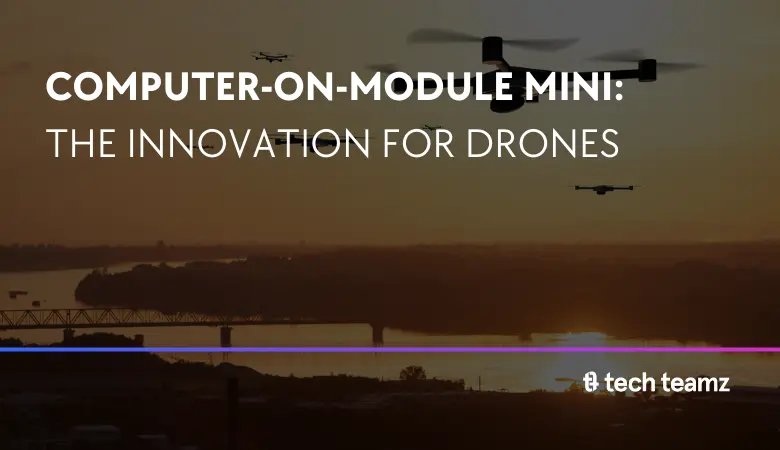Drones can be used to perform a great variety of tasks, and are becoming more and more popular. In fact, in 2024 the revenue in the drones market worldwide amounts to US$4.3bn. The amount of image data sets they need to capture is huge since, typically, the drone’s recordings are used to build 3D landscapes and analyze spaces in real time. That’s why drones function on computer-on-modules the size of a credit card: they can operate and register images without issues.
These computer-on-modules have been optimal for a while, mostly because they’re adaptable and can be scaled according to the owner’s needs. They don’t weigh more than 200 grams, and the drone can be operated without issue. However, there is always room for improvement, and this is what has happened with the new PICMG COM-HPC Mini standard.
What are drones used for?
These devices can be used for plenty of different purposes. From surveillance tasks to agricultural ones: it’s possible to scan beaches and coasts with a drone, and authorities can be on the lookout for people and vehicles in trouble. Authorities can also identify traffic jams and accidents on busy roads.
In agriculture, they can record and register the changes to the ecosystem, allowing people to build 3D models of these recordings, and providing situational information invaluable for people with agricultural business. Since image technologies evolve all the time, drones have to update their components and software to capture the best possible image, in high resolution and with great amounts of information.
Since drones serve multiple purposes, it’s no wonder that there are different payload systems for all of these. That’s why drones can perform more than one task at the same time: from amphibious drones to multi-rotor-powered ones, these devices need to be quick and do the right job. Besides, customers can save on drones or new payload systems when things update and tech improves.
Related article: The World Of IoT: Security Issues, AI Integration, The Future Of The Industry – TechTeamZ
The new PICMG component: COM-HPC Mini
Since its launch to the market, the COM-HPC Mini has proven to be above the performance capabilities of other components, like COM Express Mini modules. Here’s a short list:
- USB 3.2 with 20 Gbit/s, USB 4.0 with 40 Gbit/s
- PCIe Gen 5/6 with up to 16 lanes
- NVMe
Furthermore, it has a cutting-edge connector, the COM Express connector, that supports transfer rates of more than 32 Gbit/s. Even better, it offers 400 pins to connect to the carrier board, accommodating the advanced interface requirements of modern edge computing processors. This represents an impressive 81% increase in pin count compared to the COM Express Mini.
The best part, however, is that the COM-HPC Mini, like the COM Express Mini, is a standard not tied to any specific vendor. It is designed to leverage high-performance commercial processors for industrial applications, using the embedded roadmaps from leading processor vendors such as Intel, AMD, and NXP. This ensures compatibility and performance across various industrial computing needs.
Final thoughts
The introduction of the COM-HPC Mini standard has revolutionized drone technology by offering exceptional performance, connectivity, and flexibility. Its advanced capabilities enable drones to tackle a variety of demanding tasks, from creating detailed 3D landscapes to conducting real-time agricultural analysis.
By supporting high-performance commercial processors and offering increased interface capabilities, the COM-HPC Mini ensures that drones remain at the forefront of technological innovation. This development highlights the critical role of adaptable and scalable computing modules in enhancing the functionality and efficiency of modern UAVs.




